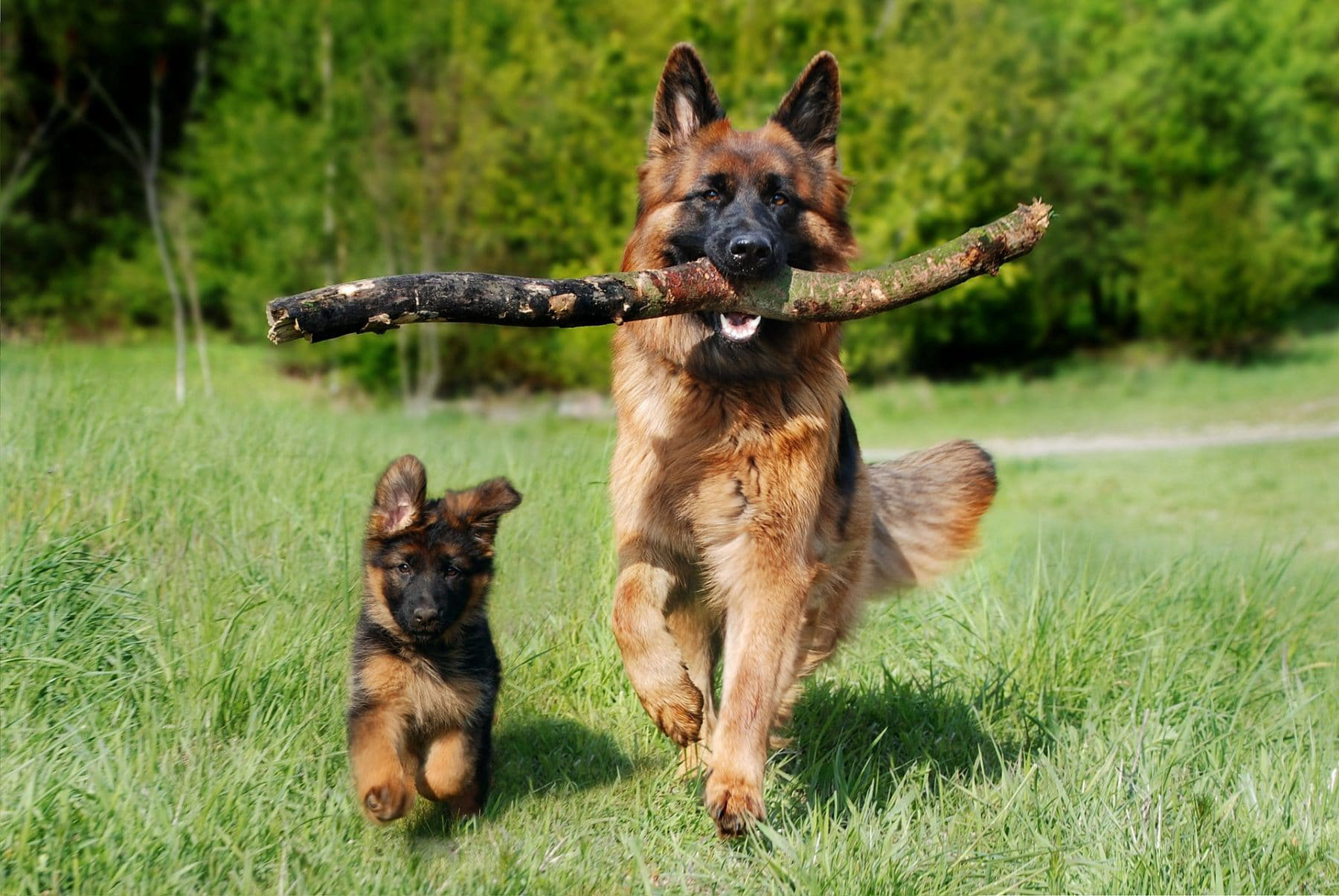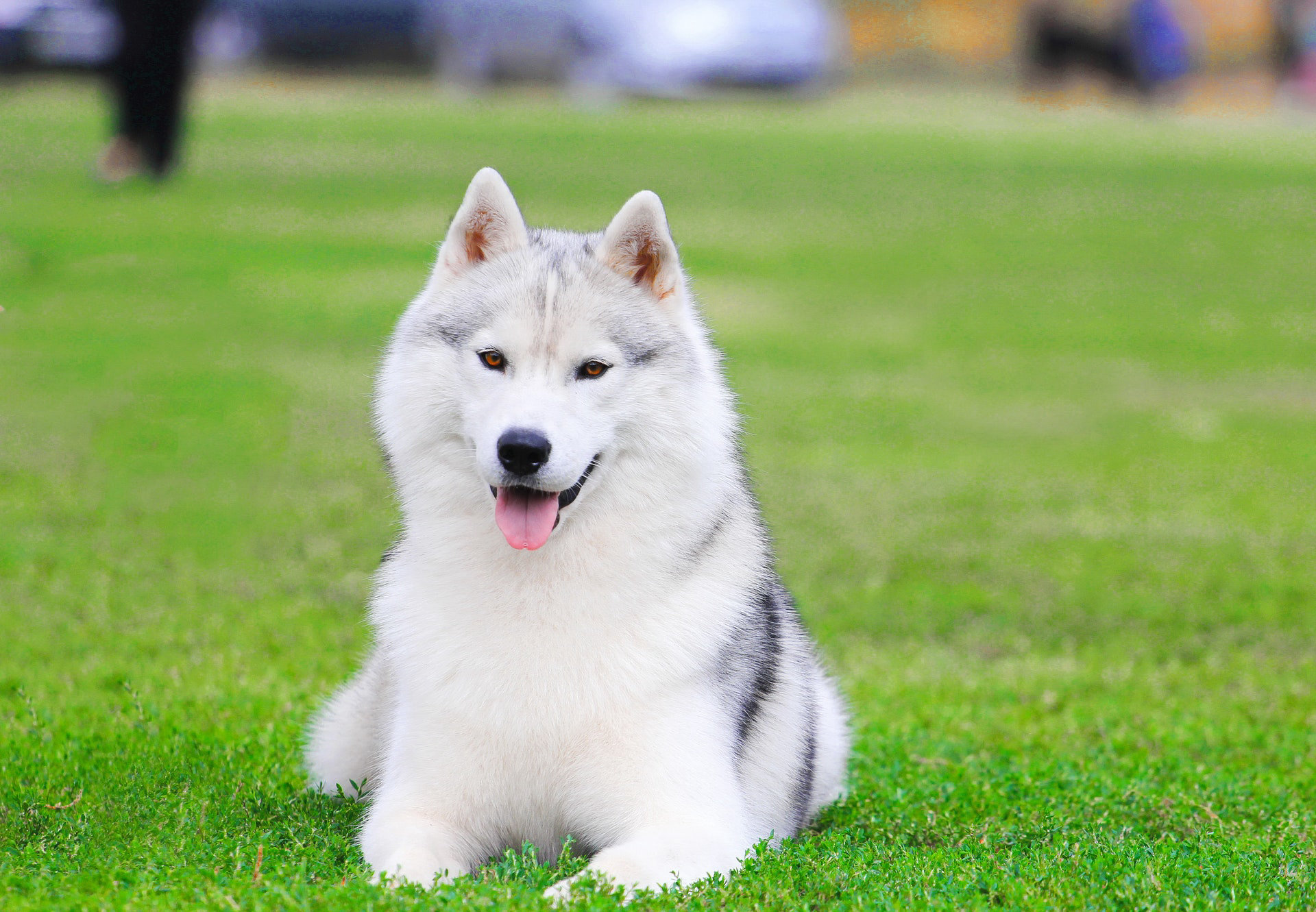Spider Bite on Dog: Symptoms, Treatment & Prevention

Most spider bites—to both dogs and humans—aren’t cause for serious concern. Usually these small bumps heal on their own without any special attention. (Chances are you won’t even notice a bite in the first place.)
Sometimes, though, a spider bite does require treatment or even immediate medical attention. Here’s what you need to know to keep your pup safe on all your adventures:
- Do venomous spiders live in the United States?
- What dangerous spiders to watch for in different parts of the country
- Spider bite prevention in dogs
- How to identify a spider bite on your dog
- What to do if a spider bites your dog
- Additional canine first aid resources
1) Yes, the United States has venomous (or poisonous) spiders
The United States is home to a few species of venomous spiders.
Venomous versus poisonous spiders
To get technical, “venomous" is more accurate than "poisonous" here. Venomous means the spider injects venom into potential threats through fangs or stingers. Poisonous refers to animals that are harmful when ingested or touched.
Most venomous spider bites are mild
Most spider bites in the United States, even from venomous species, result in only mild symptoms. Phew!
Don’t get too complacent, though. If you suspect your dog has been bitten by a venomous spider—or they experience severe symptoms out of the blue—seek medical care right away. Practice good spider bite prevention techniques to reduce the risk of bites in the first place. (More about prevention and treatment in the next sections.)
2) What venomous spiders live in the US? What areas of the country have the highest spider bite risk?
Spiders typically prefer quiet, undisturbed areas. They’re usually not aggressive toward humans or our dogs. Most spider bites are the result of accidental contact or disturbance. That means the presence of venomous spiders in a particular region doesn’t necessarily suggest encounters with them are common.
In fact, the exact incidence of the below spider bites in dogs is unknown. That's actually a good sign: It means veterinarians don't see enough serious or lethal cases to collect data!
There's still a chance your pup has an arachnid encounter, though. Here are some species of spiders to watch for on your adventures.
Black Widow Spider bites — emergency — found in all states
Black widows are perhaps the most well-known venomous spiders in the United States. Found throughout the country, they’re most common in warmer southern climates.
Black widows are known for shiny black bodies with a distinctive red hourglass shape on their abdomen.
Brown Recluse Spider bites — emergency — Midwest and South
Brown recluse spiders are found primarily in the Midwest and southern United States. Their venom can cause necrotic skin lesions in some cases—but severe brown recluse bites are thankfully rare, because these arachnids need counter pressure in order to break the skin. Brown recluse bites are most often found on dogs’ legs.
This species is brown with a distinctive violin-shaped marking on their back.
Chilean Recluse Spider bites — emergency — some Southern states
Chilean recluse spiders are most commonly found in South America, but they can make their way to the southern United States. They’re more venomous than their brown recluse relatives. While bites in the US are rare, they need to be taken seriously right away.
Red Widow Spider bites — possible emergency — found in Florida
Red widow spiders are primarily found in the southeastern United States, particularly in Florida. They have a limited range compared to other widow spider species—so serious bites are less common. They can still cause severe symptoms in some cases, though!
Red widow spiders are known for their striking red or reddish-brown coloration. Like other widow spiders, they have a distinctive hourglass-shaped marking on the underside of their abdomen.
Brown Widow Spider bites — possible emergency — some Southern states
Brown widow spiders are commonly found in the southern and southwestern parts of the country. This species' range includes states like Florida, Texas, California, Arizona, and parts of the Gulf Coast. Their venom is less potent than the black widow—but even these little arachnids can cause serious effects, particularly in small dogs.
Brown widow spiders are typically light to medium brown in color and have an hourglass-shaped marking on the underside of their abdomen. This marking is usually orange, yellow, or even white. They are smaller than black widow spiders, with a body length of about 1/4 to 1/2 inch.
Hobo Spider bites — usually not emergency — West
Hobo spiders are found in the Pacific Northwest and parts of the West. While there have been concerns about their venom, they are not considered highly dangerous. Their bites usually result in mild symptoms.

3) How can you prevent your dog from being bitten by a spider?
The best treatment is prevention. Here are some steps you can take to help protect your dog from spider bites!
Perform regular home cleaning and maintenance
Keep your home, especially areas where your dog spends a lot of time, tidy and clutter-free. Regular cleaning can help eliminate hiding spots for spiders.
Inspect outdoor play areas
Before allowing your dog to play in outdoor areas, inspect the environment for spider webs, nests, or hiding spots. Remove any spider webs or nests you find.
Store firewood and debris away from living spaces
Keep firewood, garden debris, and other clutter away from areas where your dog spends time. These can be attractive hiding spots for spiders.
Check your dog’s bedding
Regularly inspect your dog's bedding, crate, and sleeping areas for signs of spiders or spider webs. Shake out and clean bedding to remove any potential hiding spiders.
Be mindful of spiders’ favorite environments
When walking your dog in wooded or natural areas, be cautious around logs, rocks, and other potential spider habitats. Keep your dog on a leash if you’re uncertain to prevent them from sticking their nose into spider hiding spots.
Educate yourself on local spiders
Learn about the types of spiders in your area and their preferred habitats. This knowledge can help you identify potential risks and take appropriate precautions!
Supervise your dog
Keep an eye on your dog while they are exploring new environments, especially in unfamiliar outdoor settings. This way you can intervene if your dog encounters a spider.
Spider proof your home
Install screens on windows and doors to keep spiders and other insects out of your home. Seal cracks and gaps in walls and doors to prevent spiders from entering.

4) How do you know if your dog was bitten by a spider?
Identifying a spider bite on your dog can be challenging. Symptoms vary depending on the type of spider, your individual dog's sensitivity (often based largely on body size), and the location of the bite.
Look out for these general signs to help you decide what to do next for treatment.
Spider bite symptoms in dogs
If you notice any of the following symptoms, consider the possibility of a spider bite and consult your veterinarian. Pay attention to your dog's typical body language so you're able to quickly identify signs of discomfort.
- Localized swelling: Spider bites often lead to localized swelling around the area of the bite. Swelling usually appears shortly after the bite occurs.
- Redness and skin irritation: The affected area may become red, inflamed, and irritated. It may also be warm to the touch. These symptoms of spider bites can appear like a range of other allergic reactions.
- Pain or discomfort: Your dog may show signs of muscle pain, joint pain, or other discomfort. They may lick, scratch, or chew at the area of the bite. Whining and vocalization can also be a sign of pain.
- Visible bite marks: You may be able to see two small puncture marks at the site of the bite. These marks often aren't visible, though, especially if the spider bite was from a small species.
- Lethargy: Spider bites can cause lethargy or weakness in your dog. Your pup may appear tired, listless, or reluctant to move.
- Loss of appetite: A spider bite can lead to a loss of appetite in your dog.
- Vomiting or diarrhea: Some dogs experience gastrointestinal symptoms such as vomiting or diarrhea as a result of a spider bite.
- Difficulty breathing: In rare and severe cases, spider venom can cause difficulty breathing or other respiratory distress. This is more likely with certain venomous spiders like the black widow.
- Seizures or tremors: Extremely rare—in cases of severe envenomation (like from a black widow bite), your dog may experience seizures or tremors.

5) What should you do if your dog was bitten by a spider?
If you’re able to capture the spider that bites your dog, keep it in a tight jar or other secure container and show it directly to your vet. This will help determine what treatment your pup needs.
If your dog was bitten by a non-venomous spider:
If you know your dog’s bite wasn’t venomous—or their symptoms are very mild—keep a close eye on their condition while trying to alleviate their discomfort. You can treat itching or mild swelling with a cool compress (like a soft ice pack wrapped in a towel) or pet-friendly pain reliever cream.
If your dog was bitten by a venomous spider:
Try to stay calm (we know, easier said than done) and keep your dog as still as possible as you get them to your nearest emergency vet. Unnecessary movement can spread venom through the bloodstream.
Once you arrive, follow the guidance of your veterinarian. They may recommend treatment for spider bites ranging from pain relief (often through oral or intravenous pain medication), muscle relaxers, antihistamines, or antivenom depending on the severity of the bite and the type of spider involved.
They'll also monitor your dog's vital signs like heart rate and watch for other clinical signs of long-term problems.
If you aren’t sure what kind of spider (or insect) bit your dog:
It’s always better to be safe than sorry. If you live in an area with venomous spiders (so really anywhere in the United States—but especially southern states) and suspect your dog may have been bitten, consult your veterinarian immediately. They can provide guidance on what to do next!
6) Further canine first aid resources
- Bee stings in dogs
- Ticks on dogs
- Preventing and treating heat stroke
- How to put together a dog first aid kit
Review of this Article
There is so much misinformation out there, and we want to make sure we only provide the highest quality information to our community. We have all of our articles reviewed by qualified, positive-only trainers or veterinarians.
This is the professional that reviewed this article:
Amber Holly, BS, RVT, LVT
Most recent articles
Related articles
Top dog guides per area
Dog training guides

My Dog Is Food Aggressive With Other Dogs: What To Do
Does your dog ever growl when you walk by their food dish? Maybe they get possessive of treats, carrying them far away and giving you side-eye when you start to approach — or snarling at your other pets or children if they get too close.

Scent Training for Dogs: A Beginner's Guide
As almost every dog owner is aware, the nose of a dog is an amazing thing. Just as they can pick up sounds we can’t hear, their sense of smell and ability to pick up scents is well beyond ours. In fact, dogs have 40 times the number of olfactory receptors as humans.

Service Dog Training Costs: DIY vs. Pro
More than 80 million Americans rely on their service dogs to help them navigate the world. Task-trained assistance animals perform a huge range of life-changing—in many cases, life-saving—services: These dogs act as eyes for visually impaired handlers, provide mobility support, alert to seizures and blood sugar crashes, interrupt anxiety attacks, remind their people to take medications, and so much more.

What is and How to Handle Potty Training Regression
You thought your dog was house trained. Your home was clean from puddles of pee, those dreaded middle-of-the-night bathroom breaks were behind you, and you loved every minute of dog ownership… until your four-legged best friend started using the bathroom inside again. What’s going on?

Coprophagia: Why Does Your Dog Eat Poop?
Ah, poop. We humans think it’s disgusting… but many of our dogs seem to love the stuff. If you’re wondering why your canine companion tries to eat feces (either their own or that of other animals) you’re not alone!
Dog enrichment guides

The Best Dog Water Parks in the United States
Do you have a water-loving dog looking to burn some energy? There are countless dog parks to visit throughout our country — but some of them become far too hot in the midday sun to be safe for your pets to play. That’s why we’ve put together a list of some of the best dog water parks throughout the United States! At these locations, your pup can frolic, splash, and swim to their heart’s content.

Best Toys for Herding Dogs
* All Sniffspot articles are reviewed by certified trainers for quality, please see bottom of article for details *

Ultimate Guide: Dog Toys for Aggressive Chewers
Does your dog destroy every toy you give them? Is your house littered with remnants of fabric and stuffing of all different sizes? Are you tired of investing in “indestructible” toys only for your pup to still dismantle—or worse, get bored of—them in just a few days?

Daily Exercise Calculator: How Much Exercise Does Your Dog Need?
Everyone knows dogs need exercise, but how much is enough? Walks are great, but creating a truly balanced fitness plan means understanding your dog's specific needs. This post helps you develop a daily exercise calculator for your dog, considering breed, age, and lifestyle. We'll cover fun activities, understanding exercise intensity, and recognizing when your pup has had enough. Let's create a plan that keeps your dog happy and healthy!

Complete Guide To Herding With Dogs
* All Sniffspot articles are reviewed by certified trainers for quality, please see bottom of article for details *
Dog reactivity guides

Rottweiler Aggression: Truth vs. Myth
Many dogs have gotten a bad reputation over the years for being "dangerous breeds." Rottweilers are among them. Like pit bulls and other large, blocky-headed types of dogs, these powerful and beautiful animals are often assumed to be aggressive.

What Is a Reactive Dog? A Guide to Understanding Reactivity
So: Your dog is reactive. They’ll see another dog, person, or other stimulus in the environment (cars, bikes, skateboards, and other fast-moving objects are also common triggers) while out on a walk and suddenly go crazy at the end of their leash. The barking, lunging, and growling not only feels embarrassing for you — it’s clear that your pup isn’t having a great time either.

How to Socialize a Reactive Dog: A Step-by-Step Guide
Does your dog display reactivity to other pets or people? Maybe they’re a new rescue pup and are still settling into your home. Or they were sick growing up, so you missed their critical socialization period. Possibly they’ve had a bad experience after being raised as a normal puppy.

Definitive Guide: What is Dog Reactivity?
Do you have a reactive dog or suspect you may have one? You’re not alone!

The 9 Best Online Communities for Reactive Dog Parents
* All Sniffspot articles are reviewed by certified trainers for quality, please see bottom of article for details *
Sniffspot community guides

The State of Public Dog Parks Across the United States
From 2009 to 2020, there was a 40 percent increase in the development of public dog parks. Designated spots for canine exercise have become commonplace in every major city in North America — many pet owners won’t even consider renting an apartment that doesn’t have its own fenced-in pet area for their canine companions.

How This Family is Affording Their Dream Property Through Renting it Hourly to Dogs
Thousand Oaks, California has been a safe haven for Sniffspot host, Jen, since childhood. Having grown up in busy Santa Barbara, Jen, an introvert from an early age, would seek out solitude and serenity away from tourists attractions and droves of people visiting from elsewhere. “My grandparents own 60 acres about a 30 minute drive from here, and I grew up spending every summer and every holiday visiting them on the ranch,” Jen explained. “In Santa Barbara, we wouldn't go to the beach on the weekend because that's where everybody was, so you'd find places off the beaten path where the tourists weren't. For me, the ranch was just my happy place.”

Host Tips: Ellen K. What Makes Sniffspot Successful for Me
Ellen is the host of Country Pasture Getaway, one of Sniffspot's most popular sniff spots. She has taken the time to write up the lessons she has learned about how to be a great sniff spot host.

How this Oregon Farmer is Making a Business From Renting Her Land to Dogs
Just 20 minutes outside of the busy city of Portland, Oregon, and settled right on the banks of the Columbia River, you’ll find what countless visitors have flocked to the area in search of – mountain views, crisp, clean air, and running water for miles. What you might not expect to find, however, is a hidden oasis designed just for dogs and their people, owned and operated by a farming couple and enjoyed by visitors on two legs, and four.

Host Tips: Fran T. Providing Great Guest Service at our Spot
Fran is the host of Ranch Setting, one of Sniffspot's most popular spots. She has taken the time to write up the lessons she has learned about how to be a great Sniffspot host.
Top dog trainers in the US

The Best Dog Trainers in the United States of 2025
This is a list of the top dog trainers in the United States, based on votes from the Sniffspot community and the general public.
The Best Dog Trainers in Seattle, WA of 2025
This is a list of the top dog trainers in Seattle, WA, based on votes from the Sniffspot community and the general public.
The Best Dog Trainers in Portland, OR of 2025
This is a list of the top dog trainers in Portland, OR, based on votes from the Sniffspot community and the general public.
The Best Dog Trainers in Los Angeles, CA of 2025
This is a list of the top dog trainers in Los Angeles, CA, based on votes from the Sniffspot community and the general public.
The Best Dog Trainers in New York, NY of 2025
This is a list of the top dog trainers in New York, NY, based on votes from the Sniffspot community and the general public.
City dog parks guides

Top 10 Indoor Dog Parks: A US Guide
Looking for a space to play with your dog no matter what the weather’s like outside? Look no further than our list of the best indoor dog parks in the United States! These climate-controlled spaces are growing in popularity as pet ownership increases throughout the country. As a bonus, many of them also offer dog training, boarding, grooming, or daycare services on the premises.

The Best Off-Leash Dog Parks in the United States
Looking for the perfect place to play with your dog? We’ve got you covered! It’s hard to narrow down, but we’ve put together some of the best off-leash dog parks throughout the country so you can plan your next adventure — along with a checklist of what to bring, what to know beforehand, and some frequently asked questions.

Best Dog Parks Near Me in Las Vegas
Looking for the perfect dog park near me in Las Vegas? You're in luck! This guide explores all the best options for your pup, from public dog parks to private dog parks near me on Sniffspot. We'll help you find the ideal spot for playtime, socializing, and fresh air. Plus, we'll cover essential etiquette and safety tips to ensure a happy visit for everyone. Get ready for some tail-wagging fun!

The Best United States Dog Parks
Looking for the perfect place to play with your dog? We’ve got you covered!

The Best Portland, Oregon Dog Parks
Looking for the perfect place to play with your dog in Portland? We’ve got you covered! Take a look at the best local dog parks and plan for your next adventure in the City of Roses.
Dogs breeds

German Shepherd Dog: Breed Facts, Experience and Tips from 9K+ Owners
Discover the German Shepherd Dog, a breed celebrated for its intelligence, loyalty, and versatility. Known for its impressive size and smooth, graceful movements, German Shepherds excel in various roles, including as guide, therapy, bomb detection, and police dogs, while being a devoted family companion.

Labrador Retriever: Breed Facts, Experience and Tips from 9K+ Owners
Discover the Labrador Retriever, a breed celebrated for its playful nature, affectionate temperament, and trainability. Labradors are known for their friendly demeanor and adaptability, making them perfect family companions and versatile working dogs. As one of the most popular types of retrievers, Labs are ideal companions for various lifestyles and are recognized by the American Kennel Club (AKC) as an excellent breed for families.

Golden Retriever: Breed Facts, Experience and Tips from 9K+ Owners
Discover the Golden Retriever, a popular breed celebrated for its affectionate, playful, and trainable nature. Considered a large dog, Golden Retrievers were originally bred in Scotland for hunting and retrieving game beginning in the 1860s. Today, they're recognized by the Kennel Club and the American Kennel Club (AKC) as one of the most beloved companion dog breeds.

American Staffordshire Terrier: Breed Facts, Experience and Tips from 9K+ Owners
Discover the American Staffordshire Terrier, a distinct breed celebrated for its playful, friendly, and loyal nature. Often confused with the Staffordshire Bull Terrier, a separate breed of British origin, the American Staffordshire Terrier (AmStaff) is considered a medium-sized dog. While both breeds share some similarities, the AmStaff is generally larger and has been developed as a distinct breed in the United States.

Australian Shepherd: Breed Facts, Experience and Tips from 9K+ Owners
Discover the Australian Shepherd, an AKC breed celebrated for its trainable, playful, and affectionate nature. Despite its name, the Australian Shepherd is actually a native breed to the United States, originally developed to breed on farms and ranches. Considered a medium dog, Australian Shepherds were bred for herding beginning in the 1950s. As one of the high-energy breeds, Aussies are known for their boundless energy and need for regular exercise, including aerobic exercise.
Top dog names in the US

Top 1,000 Most Popular Dog Names
Looking for the perfect dog name for your new pup? We have created filterable lists of dog names from our database of hundreds of thousands of Sniffspot users. You can filter by gender, breed and state to find the most cute, unique and creative dog names.
Most Popular Male Dog Names
Looking for the perfect dog name for your new male pup? We have created filterable lists of male dog names from our database of hundreds of thousands of Sniffspot users. You can filter by gender, breed and state to find the most cute, unique and creative male dog names.
Most Popular Female Dog Names
Looking for the perfect dog name for your new female pup? We have created filterable lists of female dog names from our database of hundreds of thousands of Sniffspot users. You can filter by gender, breed and state to find the most cute, unique and creative female dog names.
Most Popular Golden Retriever Names
Welcome to our comprehensive list of Golden Retriever dog names, curated from our vast database of Sniffspot users. Filter through hundreds of thousands of options by gender, breed, and state to discover the most adorable, original, and imaginative names for your beloved Golden Retriever.
Most Popular Labrador Retriever Names
Welcome to our Labrador Retriever dog names page! Here you can browse through filterable lists of names for your beloved furry friend, ranging from cute and classic to unique and creative options. Our database of hundreds of thousands of Sniffspot users ensures you'll find the perfect name for your Labrador Retriever, whether you're seeking a name for a male or female, based on breed or state.
Top dog rescues in the US

The Best Washington Dog Rescues & Shelters in 2025
This list showcases the top dog rescues & shelters in Washington. These remarkable organizations have been recognized for their unwavering dedication to the well-being of countless dogs.
The Best Oregon Dog Rescues & Shelters in 2025
This list showcases the top dog rescues & shelters in Oregon. These remarkable organizations have been recognized for their unwavering dedication to the well-being of countless dogs.
The Best California Dog Rescues & Shelters in 2025
This list showcases the top dog rescues & shelters in California. These remarkable organizations have been recognized for their unwavering dedication to the well-being of countless dogs.
The Best Florida Dog Rescues & Shelters in 2025
This list showcases the top dog rescues & shelters in Florida. These remarkable organizations have been recognized for their unwavering dedication to the well-being of countless dogs.
The Best New York Dog Rescues & Shelters in 2025
This list showcases the top dog rescues & shelters in New York. These remarkable organizations have been recognized for their unwavering dedication to the well-being of countless dogs.



























